‘The appeal about bicycles is that we have never become such a single entity with a machine.’
So says Peter Ashley, author of fascinating new book The Bicycle – A Miscellany on Two Wheels (ACC Art Books), which explores the cultural impact of over 200 years of cycling – ‘the first truly democratic means of transport’.
In the tome, you’ll discover ‘how this remarkable machine has been cycled for pleasure, put to work, sent to war and ridden very fast to set records’.
The story of the bicycle is told via fascinating images, including a rare picture of Thomas Hardy with a bike in his beloved Dorset, a snap of a German WWII bicycle fitted with an anti-tank weapon and a picture of the Home Guard practising carrying a stretcher between two bikes in 1943.
Mr Ashley told MailOnline Travel that he believes the age of the bicycle is upon us once more: ‘There was probably a Golden Age of bicycling in Edwardian times when the machines were cheaper, safer and extremely popular. But I do feel that we are now entering another, for all the right reasons of exercise, having our own independent, cheap and healthy transport and of course helping us to be more ecologically sound in our lives.’
Scroll down for a peek at some of the eclectic images he has curated for his book.

Novelist and poet Thomas Hardy with his Rover Cob outside Turnworth Rectory in Dorset around 1899. In a letter, reveals author Peter Ashley, he expressed how he thought that cycling was ‘a delightful escape, of a temporary kind, from the cares which crowd in upon one as one grows older’
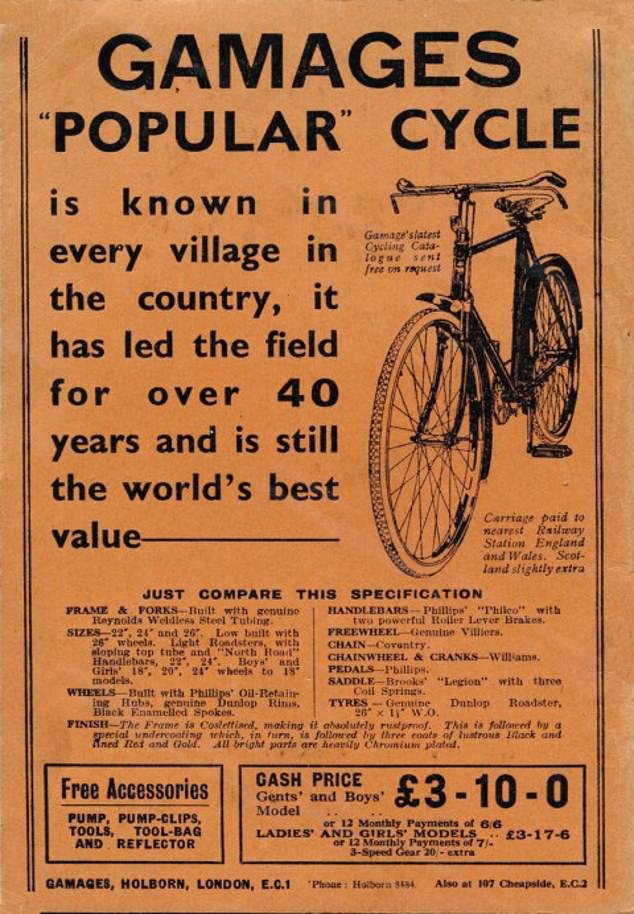
A 1949 poster for a Gamages ‘Popular’ cycle. The tech was pretty state-of-the-art for the time and what’s more, carriage was paid to the nearest railway station in England and Wales, and to one in Scotland was only ‘slightly extra’

There has been a cycle shop on this site in Market Harborough since 1898, the book reveals. This image shows the premises in the 1930s, now the home of George Halls Cycle Centre. Mr Ashley adds: ‘I particularly like the tyres hanging up like pheasants and rabbits outside a game dealer’s’

‘First essential for a lengthy bike ride – the puncture repair outfit,’ says Mr Ashley. ‘Second essential – a companion rider who knows what to do with it all’
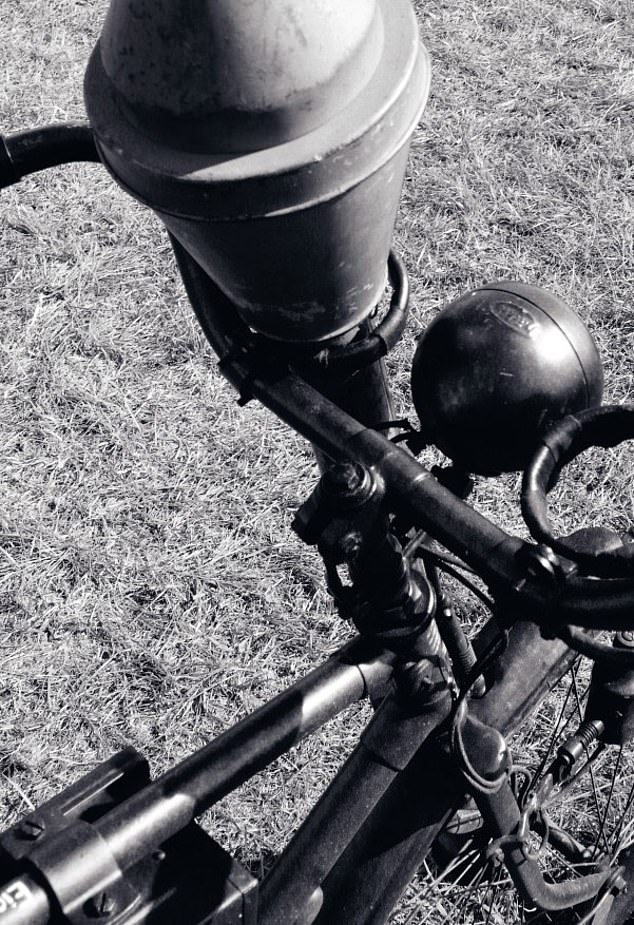
This image, Mr Ashley explains, shows a German World War II bicycle with a ‘panzerfaust’, a preloaded recoilless single-shot anti-tank weapon with a range of 60 metres (196ft)
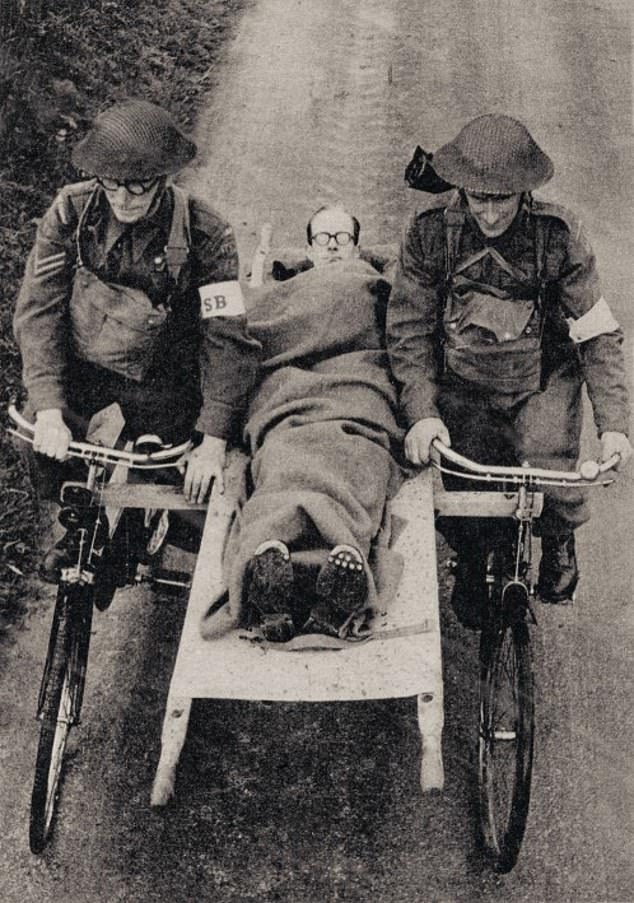
Home Guard improvisation on an exercise in North Wales, November 1, 1943
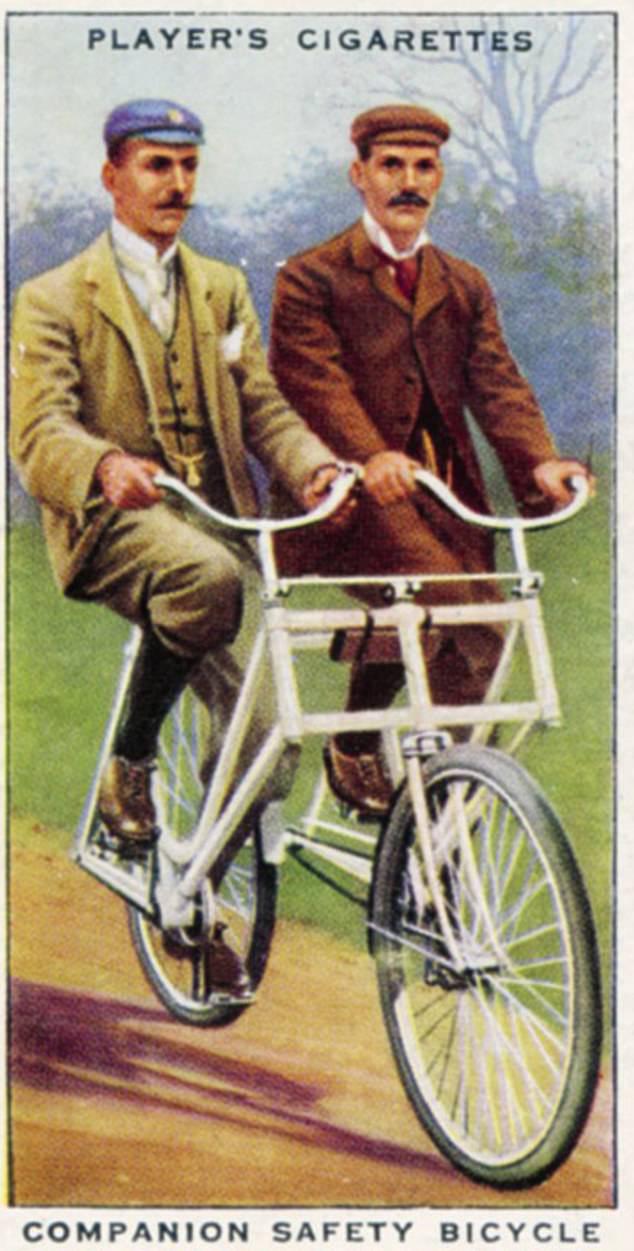
Player’s Cigarette Card No.20 – Companion Safety Bicycle. Mr Ashley comments: ‘What a very companionable way to cycle in 1896. Although those dual handle-bars and only one steering front wheel might cause a problem.’ Cigarette cards were used to stiffen tobacco packaging and advertise the brand

In the book, Mr Ashley explains the history behind one of the world’s most highly regarded saddles. He writes: ‘John Boultbee Brooks started making leather harness and tackle for horses in 1866. Trying out the new “bicycle” in 1878 he found the saddle so painful to sit on he decided to make his own. And so was born what many believe are the ultimate saddles, none more so than the one shown here, the B17, which was launched in 1888 and remains Brooks’ bestselling saddle’
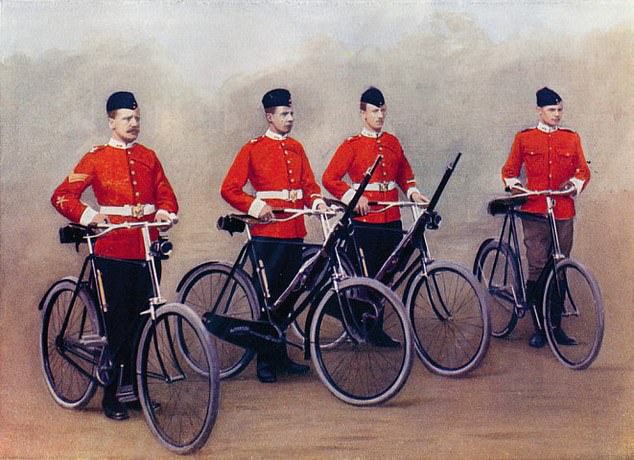
A 1900 print of the Lancashire Fusiliers cycling into the Boer War in South Africa

A classic 1900 studio photograph of two German girls proudly holding their bicycles

A recruiting poster for the South Midland Divisional Cyclist Company, which was active in both world wars, says Mr Ashley
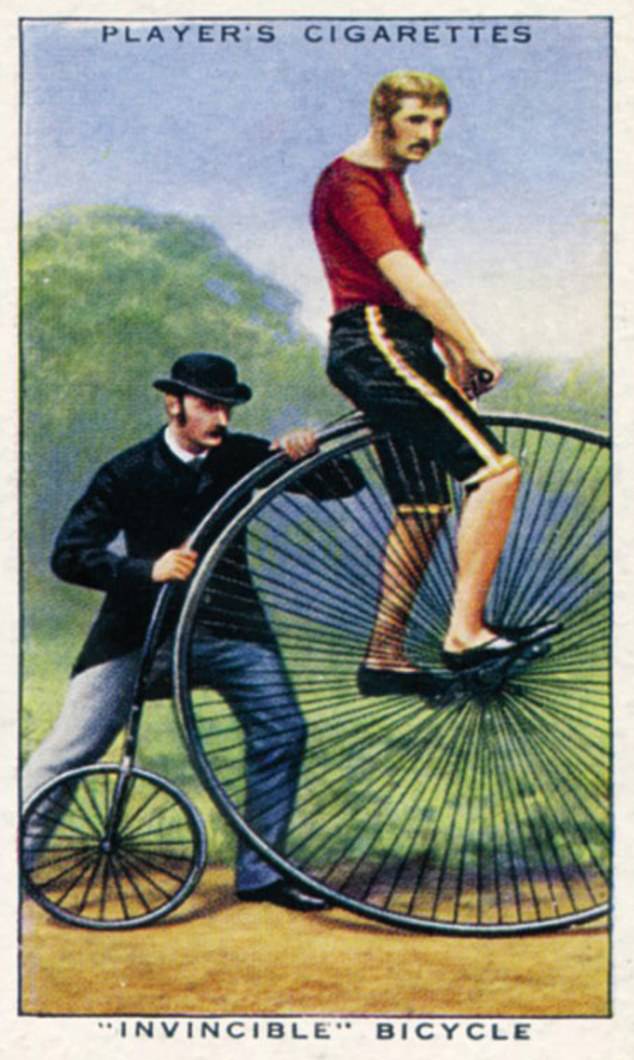
A vintage Player’s Cigarette Card No.12 – which depicts noted cyclist H L Cortis in 1882 on a 59-inch penny-farthing known as the Invincible

The cover of a Cycling Touring Guide written by Harold Briercliffe and published by Temple Press in the late 1940s

The Bicycle – A Miscellany on Two Wheels is available now, published in hardback by ACC Art Books, RRP £12. ISBN 9781788840941
Source link : https://www.dailymail.co.uk/travel/escape/article-9224131/Delightful-book-Bicycle-Peter-Ashley-charts-200-years-cycling.html












